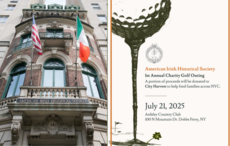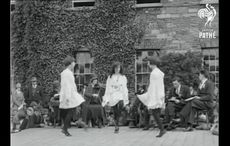IT'S been widely observed that Ireland is now accepting immigrants the way it used to send them to other countries. There has been some head-shaking over these developments, which would have seemed unthinkable a decade or two ago. Of course, there has been some tension as well. But it must be added that, as the Irish experience in America shows, the toughest challenges are yet to come.
Not many nations, now or in the past, accept immigrants with open arms. The inevitable culture clashes are a deep source of conflict.
However (and the U.S. has a right to brag here), the American example of diversity, for all of its problems, has helped create a mighty nation. Therefore, outright opposition to immigration and immigrants is usually dismissed as paranoid and racist.
It is in the small details on the path to assimilation that the hardest problems surface. Ireland right now is beginning to struggle with those details the way America did more than a century ago.
Interestingly, the Irish in America were at the center of the assimilation debate and played roles that might surprise today's Irish.
Ireland is going to have to get used to raucous debates over "bussing," "diversity" and even "bi-lingual education," buzzwords which have created great rancor in the U.S., particularly in Irish America.
In recent weeks, Irish officials have been debating the influx of immigrant children into the overwhelmed school system.
"Archbishop Diarmuid Martin of Dublin has encouraged Irish Catholic parents to send their children to schools that have a diverse ethnic composition," one newspaper reported.
"As he celebrated Mass to open the school year, Archbishop Martin addressed the controversy that arose in Dublin when some young students, the children of immigrant families, failed to find a place in the existing schools. Two new schools were quickly opened, with student bodies composed mostly of immigrants."
Now, some fear that racial, ethnic and religious segregation will develop.
For some, the answer is obvious - bus immigrant children to heavily Irish Catholic schools to create diversity. But as David Quinn noted in the Irish Independent, "Most of the people agitating hardest and loudest for a more integrated school system . are from very homogeneous middle class areas. They send their children to schools in which there are practically no children from either working class or immigrant backgrounds."
This could very quickly turn into South Boston in 1974, when working class Irish Americans rebelled against a coalition of elite reformers and poor African Americans.
Rewind even a century earlier than that, when German, Polish and Italian Catholics in America were enraged by Irish dominance of the U.S. Catholic Church and school system. Led by a German merchant named Peter Paul Cahensley, they argued for ethnic parishes.
Otherwise, Germans and other immigrant Catholics would not only leave the church but they would lose touch with their native language and culture.
Expect to hear rhetoric like this coming from the children of the Chinese, Eastern European and African immigrants in Ireland today.
Interestingly, when this debate came up in the U.S. in the 1880s, the Irish American clergy (blessed or cursed with English fluency) argued that the only path to success in America was to learn the language of their homeland. To create so called national parishes would doom immigrants to extended periods of segregation.
Will today's education officials in Ireland make the same argument? Or will they be criticized for attempting to force immigrants to learn English?
Ideally, no nation should be better prepared to deal with immigration issues than Ireland. They have sent so many people abroad, making the world a better place.
But, as the tension of the American experience shows, opening the door and welcoming hard-working immigrants is one thing.
Questions of religion, language and class are much more volatile. I wish Ireland good luck as it embarks on its own assimilation project.
I would also recommend they begin reading about how the process unfolded in the U.S. and prepare themselves for some cultural conflict.
(Contact Tom at [email protected].)




Comments